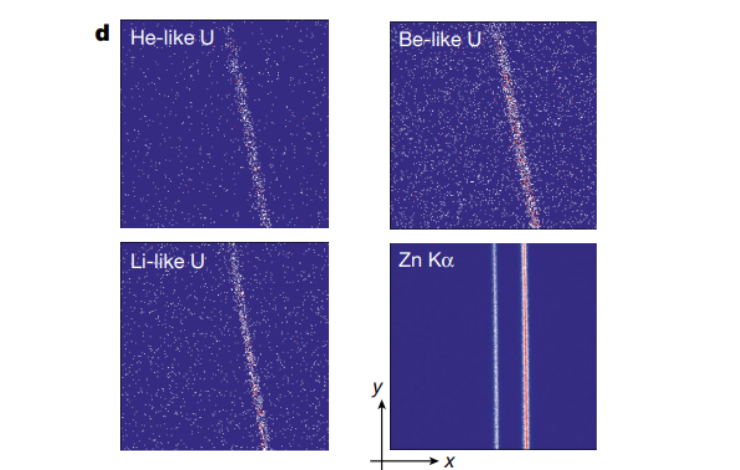25-01-2024

In the photo, detail of the graph "Experimental spectra and fits"
An international team, including researchers from the NOVA School of Science and Technology, has measured the energy of an electronic transition with an unprecedented level of precision of 37 parts per million (ppm). This value will make it possible to test the physical theory that describes the interaction between light and matter, quantum electrodynamics, in a regime of high-intensity electromagnetic fields.
The experiments used U90+ ions, ions with a uranium nucleus (the heaviest natural element) and two electrons, and were carried out at the GSI Helmholtzzentrum für Schwerionenforschung, Darmstadt, Germany, one of the few research centres in the world capable of producing these physical systems.
This research project involved the collaboration of 34 researchers from Germany, France, Poland, the United Kingdom and Portugal. The three Portuguese researchers are from the NOVA FCT Department of Physics, in Lisbon (Jorge Machado, Mauro Guerra and José Paulo Santos, the coordinator).
QED theory has numerous applications in the everyday world. These include atomic spectroscopy, lasers, photonics and the description of the properties of chemical substances such as gold and mercury. Although some of these applications can be explained using less sophisticated physical theories, it is necessary to resort to QED theory to obtain theoretical results of high precision and predictability. The development and understanding of QED has also led to advances in fields like nuclear engineering, astronomy and quantum computing.
Although QED theory is considered to be the best-tested quantum theory in modern physics, studies have mainly been carried out in the field of relatively low-intensity electromagnetic fields due to atoms and light ions. In the field of very intense electromagnetic fields, such as those of heavier and highly charged ions, QED calculations need to be made in a qualitatively different and more complex way, so the corresponding validation by experiment plays a key role.
The measurement of the energy of the electronic transition was obtained with an accuracy of 37 parts per million (ppm). This result makes it possible to separate and test separately the higher-order effects of the one-electron QED theory and the bound electron-electron interaction terms without the uncertainty related to the nuclear radius. In addition, the experimental results make it possible to discriminate between various theoretical approaches and provide an important reference for calculations in the strong field domain.
The article can be consulted here.